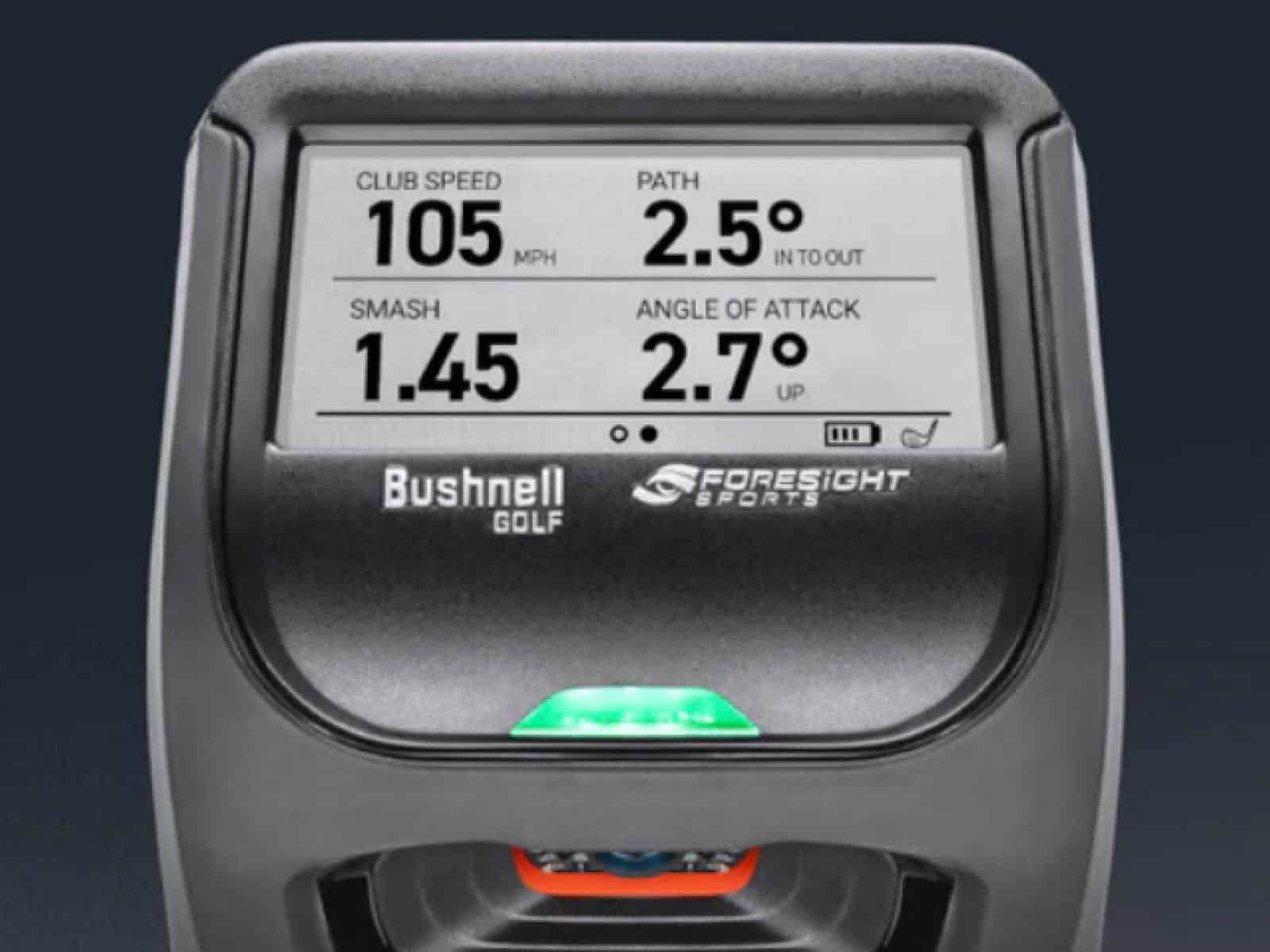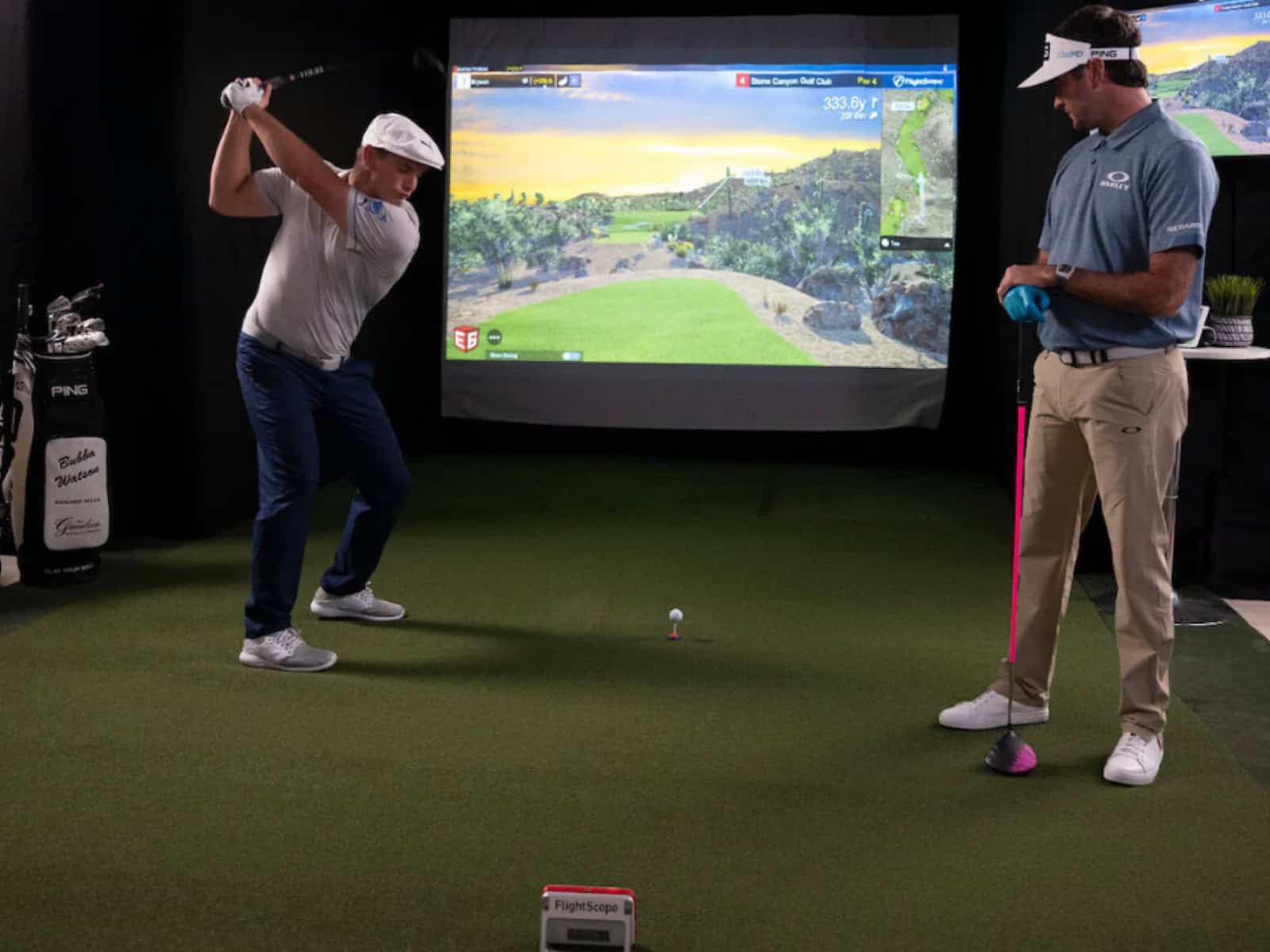By capturing intricate details of your game, launch monitors offer insights that were once only accessible to professionals. The rise of golf launch monitors signifies a technological leap forward in the sport. Still, have you ever wondered how these technological wonders actually work?
In this article, we will explore the world of launch monitors, covering everything you need to know, from their basic functionality and historical evolution to the different types available on the market.
What is a Golf Launch Monitor?
A golf launch monitor is a sophisticated device designed to analyze the physics of a golf ball’s flight. These monitors use advanced technology to measure key metrics such as ball speed, launch angle, spin rate, and carry distance.
By providing real-time feedback, launch monitors help golfers understand the intricacies of their swings and the impact on the ball’s trajectory.
Historical Evolution of Golf Launch Monitors
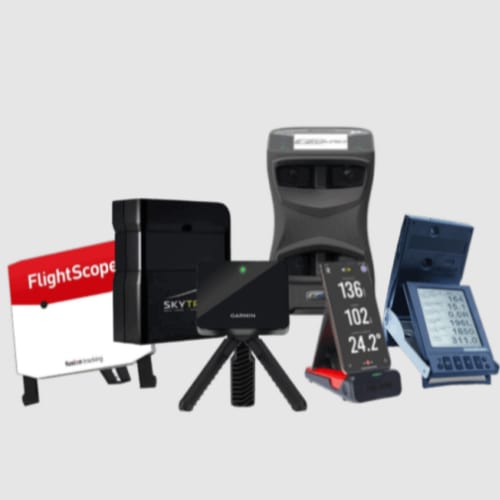
Golf launch monitors have come a long way since their inception. Early models were bulky and limited in functionality, used primarily by professionals.
As technology advanced, these devices became more compact, affordable and accurate. Doppler radar and photometric systems revolutionized the field, enabling precise measurements.
Today, even amateur golfers can access detailed analytics once reserved for tour players. The evolution of launch monitors reflects the broader trend of technology enhancing sports performance.
Key Components of a Golf Launch Monitor
Modern golf launch monitors comprise several critical components:
- Sensors: Utilize radar, cameras or infrared technology to capture data.
- Processing Unit: Analyzes the data to generate accurate metrics.
- Display Interface: Shows real-time feedback on a screen or mobile app.
- Power Source: Battery or mains-powered for consistent performance.
These components work in harmony to deliver precise data, helping golfers improve their skills through detailed analysis and actionable insights.
How Do Golf Launch Monitors Work?
Golf launch monitors rely on advanced technologies to measure various aspects of a golf shot. Here are the primary technologies utilized, as well as how the data is processed and displayed:
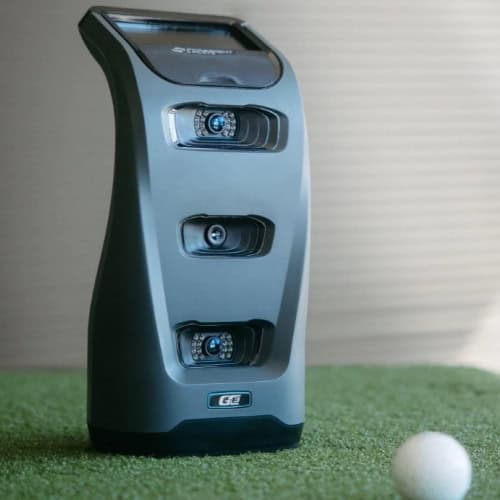
Doppler Radar Technology
Doppler radar technology measures the frequency change in radar waves as they reflect off the golf ball. This technology accurately tracks the ball’s speed, spin and trajectory. Doppler radar is widely used in high-end launch monitors due to its precision and reliability.
Photometric Technology
Photometric technology captures high-speed images of the golf ball at impact. By analyzing these images, the system calculates launch angle, ball speed and spin rate. Photometric systems are known for their accuracy in measuring ball flight data, making them a popular choice for indoor use.
Infrared Technology
Infrared technology uses sensors to detect the ball and club head movements. These sensors provide detailed data on the swing path, club face angle and impact position. Infrared systems are often integrated into golf simulators for a comprehensive analysis of both ball and club data.
Data Collection and Analysis
Golf launch monitors collect and analyze a wide range of data to provide a complete picture of a golf shot. Key data points include the following:
Ball Flight Data
Ball flight data encompasses metrics such as ball speed, launch angle and spin rate. This information helps you understand how your swing affects the ball’s trajectory and distance.
Club Head Data
Club head data includes things like swing speed, path and face angle at impact. Analyzing these metrics can pinpoint flaws in swing mechanics and help you make necessary adjustments.
Impact Data
Impact data focuses on the point of contact between the club and the ball. It includes details like smash factor and spin axis, which are crucial for optimizing shot performance.
The Role of Algorithms in Data Interpretation
Algorithms play a crucial role in interpreting the data collected by golf launch monitors. These complex mathematical models analyze the raw data to generate meaningful insights. Algorithms can identify patterns and trends, providing actionable feedback on your performance.
Real-time Data Display and User Interfaces
Modern launch monitors feature user-friendly interfaces that display data in real time. Whether on a dedicated screen or a mobile app, these interfaces present the data in an accessible format. This real-time feedback allows you to make immediate adjustments and improve your game efficiently.
Types of Launch Monitors
The following are various types of launch monitors available today based on use scenarios.
Portable vs. Stationary Launch Monitors
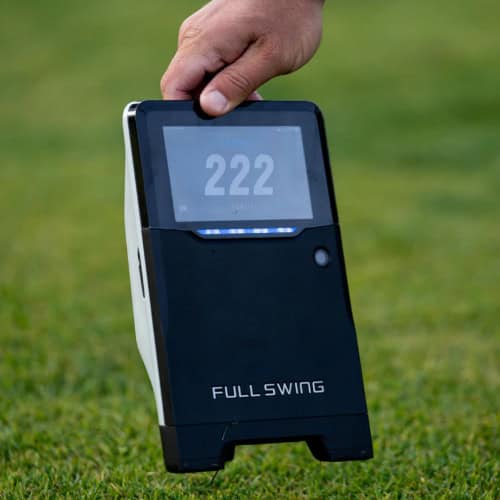
Portable launch monitors are compact and easy to transport. They are ideal for golfers who practice in multiple locations. These devices can be set up quickly, making them perfect for driving ranges or home use. Despite their small size, many portable monitors provide accurate data. Some popular models even sync with mobile apps for real-time analysis and feedback.
Stationary launch monitors, on the other hand, are typically larger and more robust. They are designed for dedicated practice facilities or indoor simulators. These monitors often offer more advanced features and higher accuracy due to their stable setup. They are perfect for comprehensive swing analysis and are commonly used by professional coaches and high-end golf facilities.
Professional-Grade vs. Consumer-Grade Monitors
Professional-grade launch monitors are built for precision and reliability. They use advanced technologies like Doppler radar and high-speed cameras to capture detailed swing and ball flight data. These monitors provide extensive metrics that are important for serious golfers and coaches. Brands like TrackMan and FlightScope are renowned for their professional-grade equipment, offering unparalleled accuracy.
Consumer-grade launch monitors cater to the average golfer. They are more affordable and user-friendly, making them accessible to a broader audience. These monitors still provide essential data such as ball speed, distance and launch angle, but with slightly less accuracy than their professional counterparts. Models like SkyTrak and Rapsodo are popular choices among amateur golfers looking to improve their game without breaking the bank.
Top Brands and Models in the Market
Let’s now go through some big names in the launch monitor market. These are very popular brands that are trusted by professionals and amateurs alike.
TrackMan
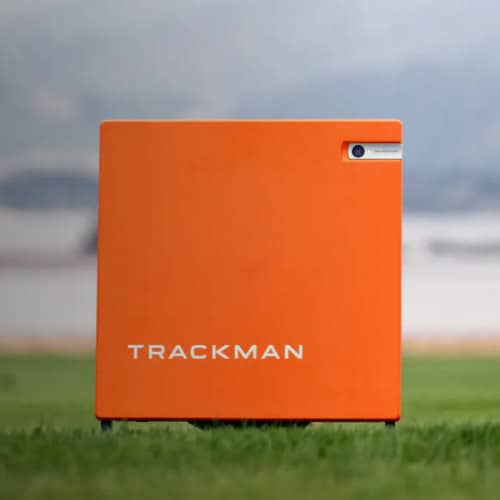
TrackMan is a leader in the launch monitor industry. Known for its precision, TrackMan uses Doppler radar to deliver comprehensive data on ball flight and club movement.
It’s a favorite among tour professionals and coaches for its detailed analysis, pinpoint accuracy and real-time feedback. Trackman’s in-house technology is OERT (Optically-Enhanced Radar Tracking).
FlightScope
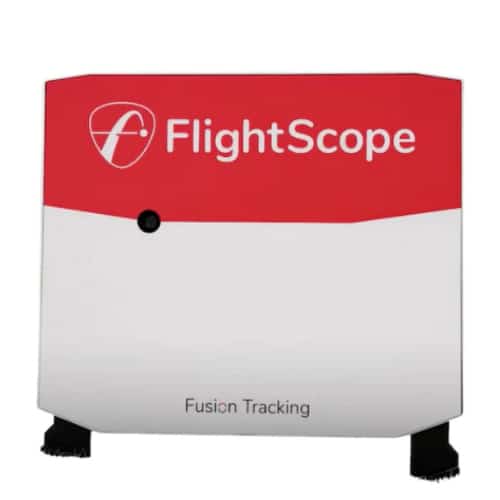
FlightScope offers a range of launch monitors suitable for different skill levels. Its professional-grade models like the X3 are highly regarded for their accuracy and advanced features, while its more budget-friendly Mevo + offers great value for money.
FlightScope uses 3D Doppler tracking technology to provide in-depth insights into every aspect of a golfer’s swing. Their proprietary tracking technology is called Fusion Tracking (combining radar and cameras).
SkyTrak
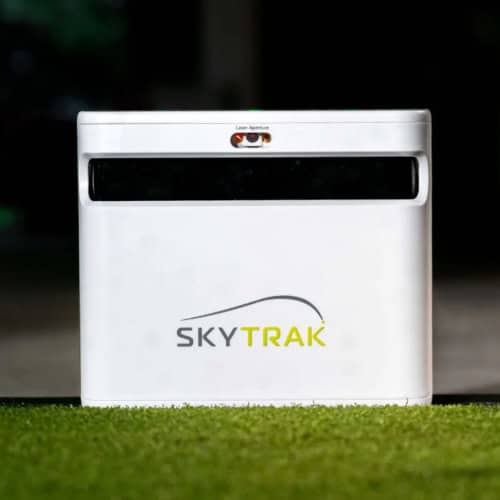
SkyTrak is a very popular choice for consumer-grade launch monitors. It combines photometric technology with a user-friendly interface, making it accessible to amateur golfers.
SkyTrak offers accurate data and integrates seamlessly with golf simulation software, providing a comprehensive practice experience.
Skytrak’s latest offering, namely Skytrak +, brought improvements over its predecessor by combining Doppler and photometric technologies to greatly enhance accuracy.
Foresight Sports

Foresight Sports is known for its high-quality photometric launch monitors and simulators. The GCQuad and GCHawk models are particularly popular among professionals and serious golfers.
These devices use advanced camera-based technology to capture precise swing and ball flight data, making them excellent tools for game improvement.
Lately, Foresight announced upgrades to its high-end models, with the Foresight Falcon offering the GCHawk performance in a smaller size, and the Foresight Quadmax bringing some enhancements over the GCQuad. They all utilize the same quadrascopic camera configuration.
Frequently Asked Questions
We decided to answer some commonly asked questions about launch monitors to ensure you understand all the facets of the topic at hand.
How accurate are golf launch monitors?
Golf launch monitors vary in accuracy depending on their technology and price range. High-end models, like those from TrackMan and Foresight Sports, use advanced radar and photometric systems to deliver highly precise data, often within a 1% margin of error.
More affordable consumer models may have slightly less accuracy but still provide valuable insights for most golfers. It’s essential to consider your specific needs and budget when evaluating accuracy.
Can launch monitors be used indoors?
Yes, many golf launch monitors are designed for both indoor and outdoor use. Photometric launch monitors, which rely on high-speed cameras to capture ball data, are particularly well-suited for indoor environments.
These devices can be used in home setups, golf simulators and indoor practice facilities, allowing for practice year-round regardless of weather conditions.
Do I need professional training to use a launch monitor?
No, you don’t need professional training to use a launch monitor. Many modern devices are designed with user-friendly interfaces that make them accessible to golfers of all skill levels. They often come with comprehensive manuals and customer support to help you set up and interpret the data.
However, working with a coach can maximize the benefits by providing expert analysis and tailored advice based on the data collected.
How do I set up a golf launch monitor for optimal performance?
Setting up a launch monitor properly is crucial for accurate data collection. Here are some general steps:
1- Placement: Position the launch monitor at the recommended distance from the ball, typically 6-8 feet for radar-based systems and closer for photometric systems.
2- Alignment: Ensure the device is aligned correctly with the target line. Many models have alignment guides or lasers to help with this.
3- Calibration: Follow the manufacturer’s instructions for calibration, which may involve hitting a few test shots.
4- Environment: For indoor setups, ensure sufficient lighting and avoid reflective surfaces that could interfere with data collection.
5- Software: Connect the launch monitor to its companion software or app to view and analyze the data.
By following these steps, you can ensure your launch monitor operates at its best, providing you with accurate and actionable insights.
Final thoughts
Golf launch monitors have revolutionized practice and performance for golfers. These devices provide detailed data on ball speed, launch angle, spin rate, and carry distance, enabling informed decisions to enhance gameplay.
Whether you’re an amateur or a professional, using a launch monitor can significantly improve swing mechanics, equipment customization and progress tracking.
In addition, future advancements promise even more accessible and immersive experiences with augmented and virtual reality, as well as enhanced connectivity for real-time coaching. Embracing this technology can perfect your game, providing precise feedback and helping you achieve your goals.
Thanks for reading!



